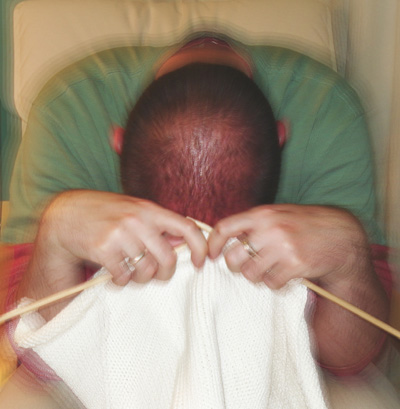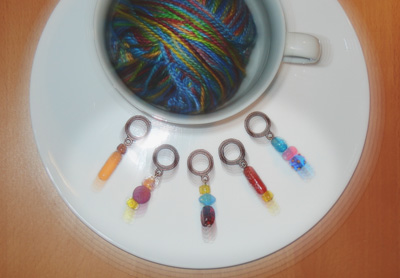Call
me crazy
  There’s really no other way to start
this, except to say: nearly a year ago, in
mid-November of 2006, I just barely stopped
myself from having a full-on meltdown at work,
and was able to postpone it until I got home…whereupon
I experienced the beginnings of a full-fledged
balls-out nervous breakdown. There’s really no other way to start
this, except to say: nearly a year ago, in
mid-November of 2006, I just barely stopped
myself from having a full-on meltdown at work,
and was able to postpone it until I got home…whereupon
I experienced the beginnings of a full-fledged
balls-out nervous breakdown.
This was not a ha-ha this-will-be-a-funny-story
nervous breakdown. It was the real deal, and
it kept me home from work, and away from many
people, places and things, for just under seven
months.
As you read this, I will (hopefully)
be starting full five-day weeks at the office
after a succession of medications and a long
and tiring reintegration period. Those who
know about my situation have been generous
with their time and their support, and I am
grateful to have them in my life.
(Some of you who know me personally may be
shocked to find out about this here and now,
and to you I can only apologize. It’s
not something I’ve been able to tell
everyone, and picking and choosing has mostly
depended on circumstance. Sometimes it was
just nice to get out of the house and ‘pretend
to be normal,’ depending on how loose
your definition of ‘normal’ might
be.)
Now, it was not knitting that caused me to
go off the rails—though you might well
wonder. It was in fact a combination of things,
many of which were work-related, some of which
were personal, and all of which were likely
affected by my particular biochemical makeup.
If anything, knitting had given me a productive
and sustaining activity to focus on in the
months prior to my collapse, occupying my trembling
hands as best it could and quieting the relentless
tumble of thoughts inside my head. But, as
calming and constructive a force as knitting
(or any creative passion) can be, it can’t
prevent the accident that’s waiting to
happen.
I know that some of you have suffered
from anxiety or depression and have spent months
or years denying or suppressing the symptoms,
concealing them from partners and children,
friends and co-workers, acquaintances and strangers.
Not wanting to burden them or worry them. Feeling
it was your problem to deal with on your own.
Some of you may even have felt the same snap
of the fine thin line that I did as I watched
my ‘saner’ self—the coper,
the helper, the listener, the shoulderer—dart
away brightly coloured through the watery waves,
leaving the rest of me alone and lost on a
quickly darkening shore.
  I spent those early days shut up in my apartment,
crying and sleeping and wandering aimlessly
from room to room, a green cotton throw clutched
like a cape around my shoulders. Once or twice
a day I picked up my needles and yarn and staggered
through a few rows before putting them back
down and meandering off again. I had been close
to finishing the first of a pair of toe-up
socks before all hell broke loose. It was a
good thing, as now the reassuring repetition
of k2p2 was pretty much all that my poor fog-shrouded
brain could handle. I spent those early days shut up in my apartment,
crying and sleeping and wandering aimlessly
from room to room, a green cotton throw clutched
like a cape around my shoulders. Once or twice
a day I picked up my needles and yarn and staggered
through a few rows before putting them back
down and meandering off again. I had been close
to finishing the first of a pair of toe-up
socks before all hell broke loose. It was a
good thing, as now the reassuring repetition
of k2p2 was pretty much all that my poor fog-shrouded
brain could handle.
Then came medication, and side effects, and
dosage changes, and more side effects, and
new medication, and more side effects, and
dosage changes, and more side effects. The
brain fog slowly burned away and with it the
shroud of gut-twisting anxiousness and despair
that I had clung to, and that had clung to
me, for so long. But while I longed to immerse
myself in the activities that had always brought
me comfort—books, movies and DVDs, albums
and CDs, videogames and knitting—I found
that, in addition to all the usual physical
problems that come with SSRIs (selective serotonin
reuptake inhibitors), my attention span, stamina
and powers of concentration were suddenly in
short supply. I stopped reading, stopped listening
to music, stopped watching TV. My knitting
went from a few rows at a time to a few stitches
at a time, i.e. barely worth the trouble to
lift the needles. However, I developed a renewed
interest in craft books and magazines, and
became a loyal reader of a wide range of knitting,
crochet, sewing and craft blogs from all over
the world. Even the shortest entries could
contain surprising insights into the creative
mind, as well as a feeling of connection and
community at a time when I felt most isolated.
I took inspiration from Flickr groups, web
forums, podcasts and knit/crochet/sew-alongs,
even if I couldn’t fully participate
in their activities. Whenever I could summon
the energy, I turned my attention to improving
my office-cum-craftroom, making it less cluttered
and more inviting for the day that I would
be able to resume my creative work. I corresponded
with other crafters through my own blog, pushed
myself to make regular updates, made carefully
prepared and timed visits to yarn stores, bookstores,
gatherings, parties and get-togethers. I pushed
gently but insistently against the limits of
my endurance without actually pushing my luck.
There were a few minor disasters, and a few
other setbacks, but gradually I reached the
point where I was awake for longer than I was
asleep, and was growing increasingly restless,
casting about for something to do—which
I took to be a very good sign. And so I picked
up the long lost sock again, and I began to
knit.
  I’m the first person to say that knitting,
like marriage, is not a solution to all of
one’s problems (sorry, Stephanie!). If
anything, it just adds a new set of problems
to your current ones. But for every problem
you solve, for every step up the ladder you
climb, your mind grows a little sharper, your
confidence a little stronger, your heart a
little larger, your worldview a little brighter. I’m the first person to say that knitting,
like marriage, is not a solution to all of
one’s problems (sorry, Stephanie!). If
anything, it just adds a new set of problems
to your current ones. But for every problem
you solve, for every step up the ladder you
climb, your mind grows a little sharper, your
confidence a little stronger, your heart a
little larger, your worldview a little brighter.
Even when I couldn’t act creatively,
I could think creatively, and that helped put
a future in front of me when I struggled to
think past the next day. “When I’m
ready,” I would say to myself as I looked
through some patterns for knitted toys. “When
I’m ready I will try this.” Or “I
can make that, I know I can,” as I gazed
at a feather-and-fan baby blanket. “I
can make that when I’m better. I’ll
get better soon, and when I do, I’ll
make that.”
|

